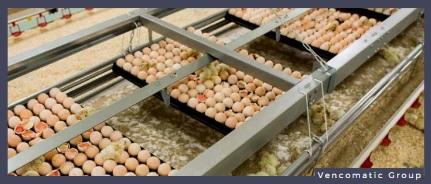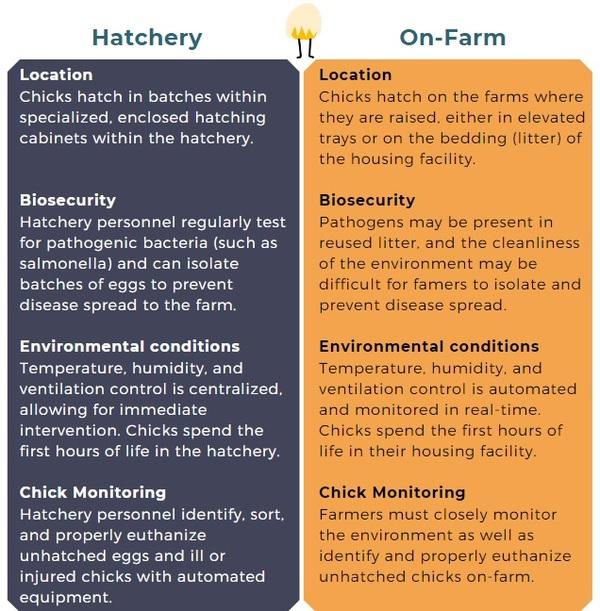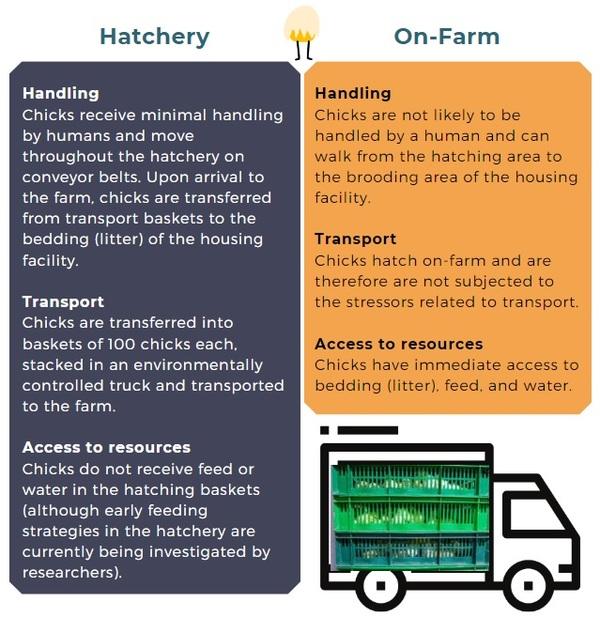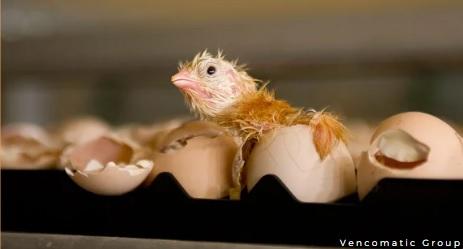On-Farm Hatching of Broiler Chicks: An Overview
Published: April 10, 2024
By: Dr. Shawna Weimer, University of Arkansas. Reviewers: Dr. Allison Pullin, North Carolina State University; Dr. Marisa Erasmus, Purdue University; Dr. Richard Blatchford, University of California, Davis.

The hatching phase of broiler production refers to the last three days of incubation, which are embryonic days 18-21. This phase of embryonic development is critical for the chick’s survival, as well as welfare and production later in life. In commercial hatcheries, eggs with viable embryos are transferred from incubators to hatching cabinets on embryonic day 18. Chicks hatch in the hatching baskets on embryonic day 21 and are transported to their housing facility. On-farm hatching is a new technological alternative to hatching chicks in hatching cabinets. On embryonic day 18, eggs with viable embryos are transported from the hatchery to the housing facility where they hatch on-farm.
Recent research has indicated that there may be some welfare benefits for chicks that hatch on-farm. This Poultry Press will highlight some of the differences between traditional vs. on-farm hatching and potential stressors that can affect chick welfare.

What is the difference?
The differences between traditional and on-farm hatching can depend on many broiler company considerations, including the scale of the operation, cost, time, and logistics. Here we will focus on the differences in terms of location, biosecurity for disease prevention (see vol. 44 biosecurity), environmental conditions (see vol. 38 incubation conditions), and chick monitoring.

What about potential stressors?
The stress response is complex and can vary greatly between individuals. This section will highlight the risk factors that could potentially stress chicks, including handling, transport, and access to resources (see vol. 41 ensuring chick welfare).

Incubation considerations
This Poultry Press is a brief overview of some of the differences between traditional vs. on-farm hatching and potential stressors that can affect chick welfare. There are many other considerations not included in this volume that have been investigated by researchers, such as chick quality and bird production, health, behavior, and other welfare considerations later in life. While on-farm hatching reduces the potential risk factors associated with traditional hatchery processes, research is needed to optimize on-farm hatching technologies for commercial broiler production.

This article was originally published on Poultry Extension Collaborative (PEC) and it is reproduced here with permission from the authors.
References
References & further reading
Innovate Animal Ag. https://www.animalinnovation.org/on-farm-hatching-overview
Vencomatic Group. https://www.vencomaticgroup.com/on-farm-hatching
Related topics:
Related Questions
What is the hatching phase of broiler production, and why is it crucial for chick survival and welfare?
The hatching phase of broiler production refers to the last three days of incubation, which are embryonic days 18-21. This phase of embryonic development is critical for the chick’s survival, as well as welfare and production later in life.
What are the key steps involved in the hatching process, both in commercial hatcheries and on-farm hatching?
In commercial hatcheries, eggs with viable embryos are transferred from incubators to hatching cabinets on embryonic day 18. Chicks hatch in the hatching baskets on embryonic day 21 and are transported to their housing facility. On-farm hatching is a new technological alternative to hatching chicks in hatching cabinets.
What are the main differences between traditional and on-farm hatching processes in broiler production?
The differences between traditional and on-farm hatching can depend on many broiler company considerations, including the scale of the operation, cost, time, and logistics.
What are some of the potential stressors that could impact chicks during the hatching phase and early development?
The stress response is complex and can vary greatly between individuals. This section will highlight the risk factors that could potentially stress chicks, including handling, transport, and access to resources.
Authors:
University of Arkansas (USA)
North Carolina State University - NCSU
Purdue University (USA)
Recommend
Comment
Share

Would you like to discuss another topic? Create a new post to engage with experts in the community.









.jpg&w=3840&q=75)